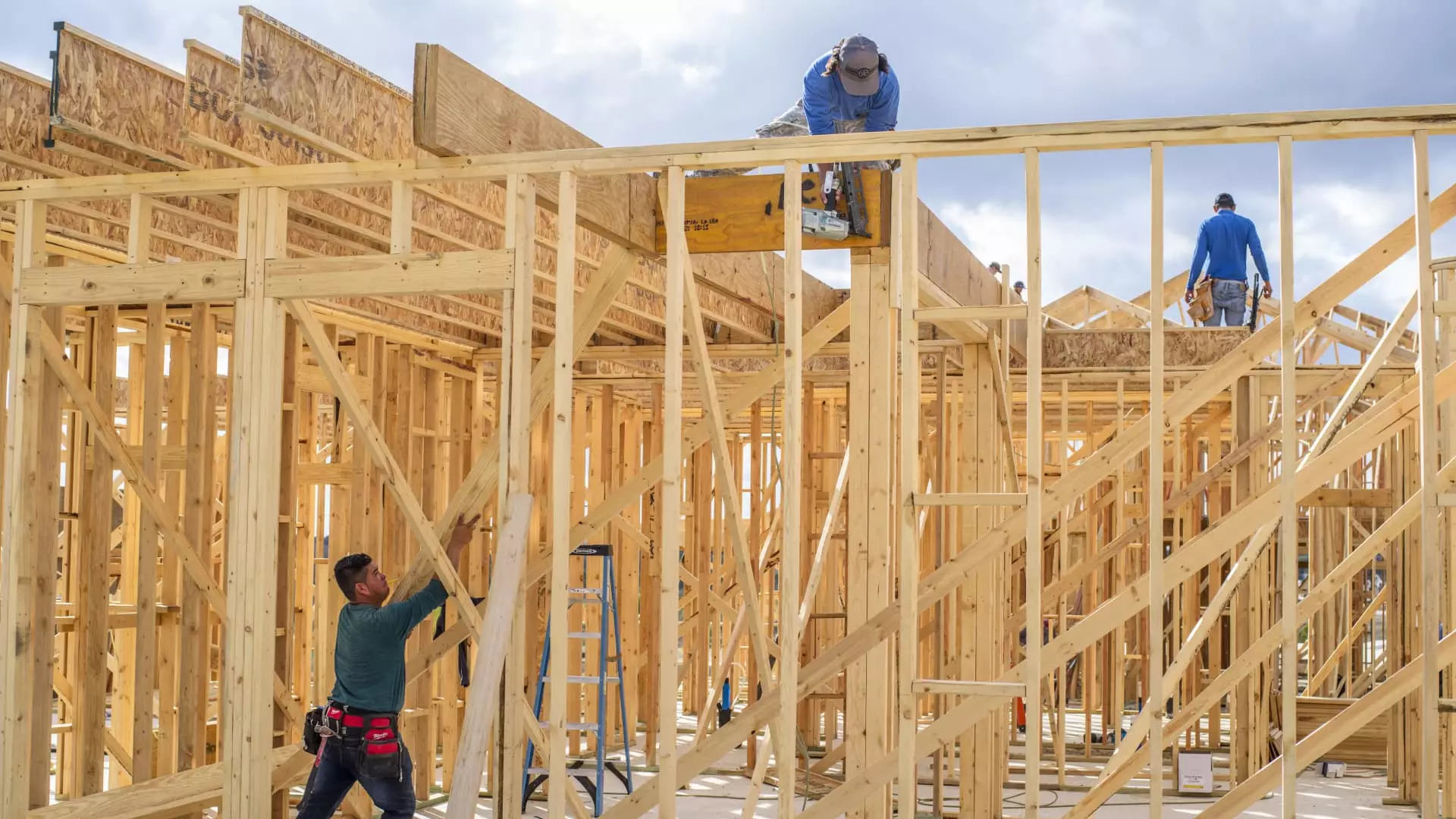The sentiment among single-family homebuilders in the United States is in a precarious state, having dipped to its lowest mark in five months as of February. The National Association of Home Builders (NAHB) has reported a notable 5-point decline in its Housing Market Index (HMI), bringing the index down to 42—a clear indicator that the mood among builders is souring. Notably, a reading below 50 reflects a predominantly negative sentiment, starkly contrasting with the slightly more optimistic 48 recorded just a year prior. This downward trend can be largely attributed to rising concerns over tariffs that threaten to inflate builders’ costs significantly.
According to Carl Harris, the NAHB Chairman and a homebuilder based in Wichita, Kansas, there remains cautious optimism surrounding potential pro-development policies, especially concerning regulatory reforms. However, the prevailing uncertainty regarding these policies juxtaposed with escalated costs is fostering a pessimistic outlook for the housing market in 2025. Builders’ worries are further substantiated by the persistent rise in mortgage rates and home prices, leading to diminished affordability for prospective homeowners.
The HMI consists of several vital components that collectively shape builder sentiment. In February, current sales conditions saw a reduction of four points, resulting in a total score of 46. Buyer traffic similarly suffered with a three-point decline, landing at a mere 29. Most troubling, however, was the sales expectation component, which plummeted 13 points to 46—the lowest reading since December 2023. These indicators reflect not only the current state of the market but also signal a concerning gap between builders’ anticipated outcomes and reality.
Compounding the challenges facing homebuilders is the upward trajectory of mortgage rates. In January and February, the average interest rate on 30-year fixed mortgages exceeded 7%, a marked increase from the previous 6% range. Such elevated rates exert pressures on buyer affordability, consequently dampening purchasing power. As prospective buyers grapple with higher costs, the demand for new homes is likely to suffer as well.
Additionally, the recent tentative measures by President Trump to alter tariffs on building materials originating from Canada and Mexico have added another layer of uncertainty. Although the implementation of these tariffs has seen delays, builders remain apprehensive, fearing that they will ultimately face escalated material costs. As Robert Dietz, NAHB’s chief economist, points out, the construction industry significantly relies on imports—32% of appliances and 30% of softwood lumber are sourced internationally. This dependency amplifies concerns surrounding potential tariff implications, further complicating the existing cost structure for builders.
Despite an overall dip in builder confidence, the landscape of single-family housing starts has been on a decline compared to the previous year, reflecting the challenges not only in supply but also in buyer demand. The precarious state of affordability has led several builders to report a pullback in buyer interest, complicating their capacity to attract new clients in an already competitive market.
Interestingly, while builders had previously enjoyed a consistent increase in sentiment since August, the gloomy outlook ahead of the critical spring selling season could result in even tighter inventory levels. PulteGroup’s CEO, Ryan Marshall, noted this trend directly, indicating that high mortgage rates have significantly affected buyer demand. The loss of affordability in the market is palpable, leading to heightened buyer discretion and reduced sales.
The latest developments within the U.S. homebuilding market depict an environment marked by uncertainty and declining optimism. With escalating material costs and elevated mortgage rates restricting buyer activity, the industry must navigate these hurdles with caution. As builders brace for potential market fluctuations, the emphasis on innovative solutions in regulatory reform and cost management will be paramount. Only through proactive adaptations can homebuilders hope to revive consumer confidence and stimulate a renewed demand for housing in the coming months.

